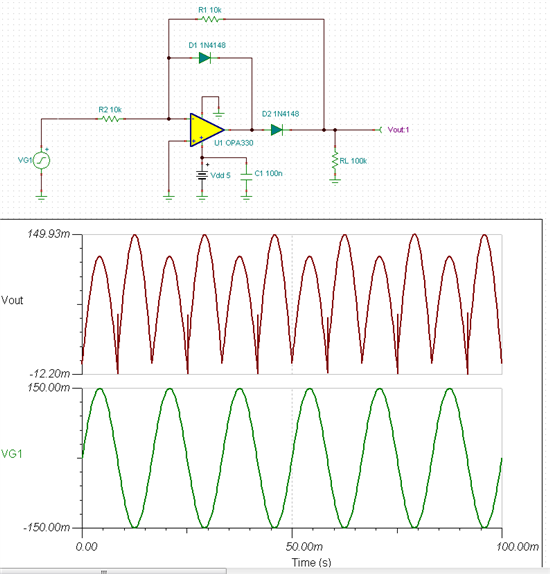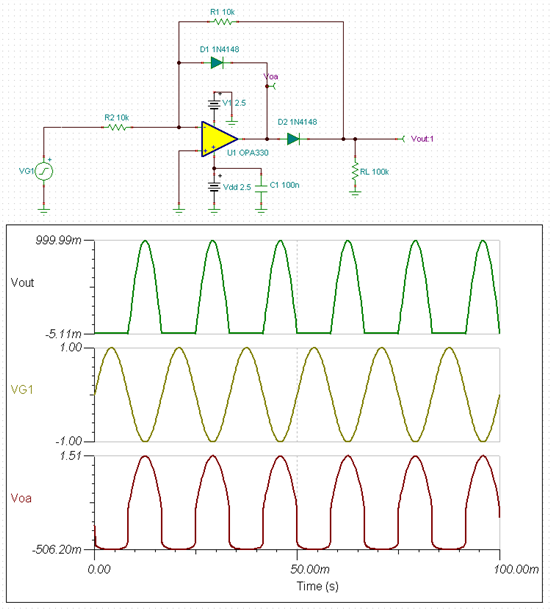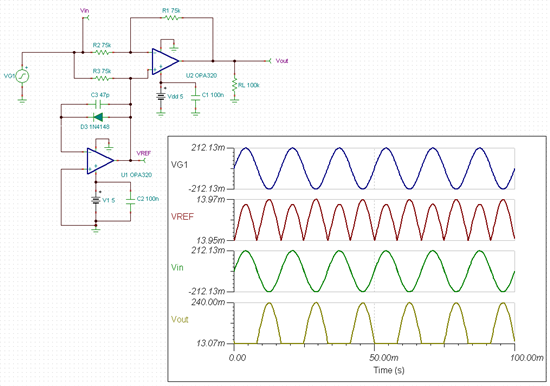I'm trying to make a standard half-wave precision rectifier using an OPA300 amp. See the attached image.
When I apply an input voltage of 60Hz, 150mV RMS, the output is fully rectified instead of half-wave. Also, every other cycle has a slightly lower amplitude than its neighbors. I have checked the circuit many times and it is connected per the schematic. Why is the output acting so oddly?
Thanks,
Eric







